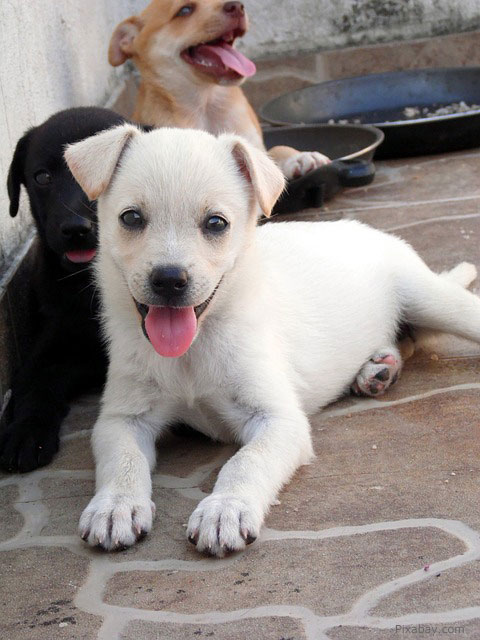
Traveling with a pet for a move is always challenging. If travel is stressful for us, imagine how your furry friend feels! Unfamiliar surroundings, strange faces, foreign scents, and lots of confusion may plague your dog on the road or in the air. If you will be moving long distance with your dog, these tips will help you make the situation more comfortable and less stressful for both you and your pup.
Visit the vet
Before leaving for your trip, it's imperative to make a veterinary appointment for your dog to ensure he is healthy enough for travel.
- Make sure his vaccinations are up to date, and request a copy of his inoculation records.
- If you are traveling by plane, you may require a health certificate issued by a licensed veterinarian. Find out the regulations for your airline--if you are traveling overseas, contact the country's consulate for more information on customs regulations for pets.
- If your dog is on any medications, make sure you have an adequate supply for the duration of your trip, plus extra in case of emergency.
Crating your dog
To keep your dog safely secured during long car trips, place her in a crate. This will prevent her from jumping around while you are driving, possibly injuring herself or interfering with your focus on the road. You can purchase a dog crate from any pet supply store near you.
- The crate should be large enough for your dog to stand, lie down, and turn around comfortably. You will be on the road a long time and want to ensure she is comfortable.
- Make sure the crate is strong and sturdy, lined with absorbent material in case your pup has an accident.
- It should be well ventilated on all sides.
- If you are traveling by air, label the crate with your name, address and phone number, and your pet's name and breed.
- Place a cozy blanket, a few of your dog's favorite chew toys, and a water bottle inside the crate to make her trip as enjoyable as possible.
Make sure he has proper identification
If your dog manages to get away from you, or he becomes separated from you during air travel, proper identification will greatly increase your chances of finding him again.
- Check your dog's collar to ensure it is sturdy and secure on his neck. His ID tags should contain all pertinent information, including his name, your name, address and phone number.
- Consider having your dog microchipped before your trip. In a mostly painless procedure, your vet will insert the microchip, which is about the size of a grain of rice, between your dog's shoulder blades with a needle. The chip can then be scanned to reveal your contact information if your dog is lost and recovered.
- Keep a recent photo of your dog (a physical photo or a digital picture on your phone) in case he becomes lost. You can show the photo around in the area to make finding your pup easier.
Tips for car travel
Traveling by car with your dog? Make the trip as stress-free as possible with these tips:
- Bring enough food for the trip, and try to stick to his regular brand. Trying out a new food can upset your dog's stomach, especially if she's already nervous being on the road. Bring plenty of bottled water as well.
- Be sure to bring an adequate supply of any medications she needs for the trip.
- It's best to avoid feeding your dog while on the road. If you can, wait until you arrive at your lodging for the night to give her a meal. Feeding her while you are driving can cause car sickness.
- Never let your dog hang her head out of an open car window. The wind can cause eye injuries.
- Make frequent stops for your dog to exercise and use the bathroom. Take her for short, brisk walks and be sure to clean up after her.
- Never leave your dog unattended in your vehicle--especially in extreme temperatures.
Tips for air travel
- Make sure to check the airline's regulations for boarding with pets before you book your flight with your dog in tow.
- Do not sedate your dog for the flight. Even though you may worry that your anxious pup will become distressed on the plane, the ASPCA and many major airlines advise you do not give your pets sedatives. The altitude can alter the effects and be dangerous to your dog.
- Make sure you have all of the necessary health paperwork required for your pet by the airline. Call in advance to find out exactly what you need--such as vaccination records and a health certificate.
- Book a nonstop flight to minimize your dog's stress. Boarding more than one plane and sitting idly in an airport waiting for a connecting flight will only increase your dog's unease.
- Make your dog's breed is well-suited for air travel. Some short-nosed dogs like bulldogs, pugs, or Shih-tzus have difficulty breathing in the plane's cargo area at high altitudes. Check with your vet if flying is safe for your dog.